一文了解PCIe 6.0的基础和测试
2022年PCI-SIG组织宣布PCIe 6.0规范标准v1.0版本正式发布,宣告完工。
延续了惯例,带宽速度继续增倍,x16下可达128GB/s(单向),由于PCIe技术允许数据全双工双向流动,因此双向总吞吐量就是256GB/s。
• Definitions/Metrics to Help Frame Server Design Challenges
• Disaggregation: dividing components and resources into subsystems
• Fabric attached: components attached in a mesh, including across network, allowing accessibility to a series of servers
• GFAM: Global Fabric Attached Memory
• IE: Fabric Attached Storage, Fabric Attached Memory
• Stranded memory: memory attached to a CPU that is accessed infrequently or not at all
• Metrics of interest contributing to server cost
• Estimated server memory cost – ~30% - 50% of total server cost
• Average utilization of DRAM (40%-50%)
If memory pooling could reduce total DRAM by 10%, total server costs could reduce by 4%-5%
Typical Applications Using PCIe and CXL Interfaces

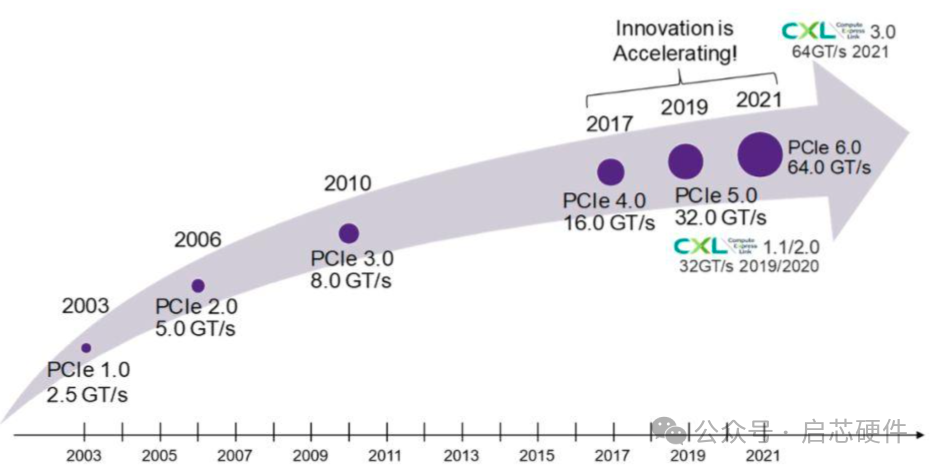
History of PCIe Specifications

需要注意的是,此表中的PCle 3.0,相对PCle 2.0,频率只从5GT/s提高到8GT/s,增加了60%;而带宽则从16GB/s升级到32GB/s(16个Lane),这是为什么呢?
PCle 3.0编码方式从8b/10b变成了128b/130b,编码效率提高了24%,从而得到:
1.6 x 1.24 = 2 倍
的传输带宽。
受制于主板线材材质和成本的原因,这一次,PCle 6.0同样采用了类似方式,也就是仅仅通过改变编码方式到PAM-4来提高带宽。
PCIe 6.0改用PAM4脉冲调幅信令,1b/1b编码,单个信号就有能四种编码(00/01/10/11)状态,比之前翻番,允许承载最高30GHz频率。不过,由于PAM4信号比NRZ脆弱,所以必须搭配FEC前向纠错机制,纠正链路中的信号错误,保障数据完整性。
除了PAM4和FEC,PCIe 6.0额外在逻辑层使用FLIT(流量控制单元)编码。
PCIe 6.0 Goals and System Implications
• Goals of PCIe 6.0
• Double bandwidth per lane to 64 GT/sec
• Mandatory backwards-compatibility to PCIe 1.1
• Similar channel reach vs. PCIe 5.0
• Higher bandwidth efficiency
• Potential system level design changes moving to next gen PCIe
• Increased board design complexity and cost – same reach at higher data rate
• Need for new materials and/or greater manufacturing integrity
• Longer reach needed for riser cards and back planes
• Market demand to further expand disaggregation
Previous PCIe Generation(s) vs. PCIe 6.0
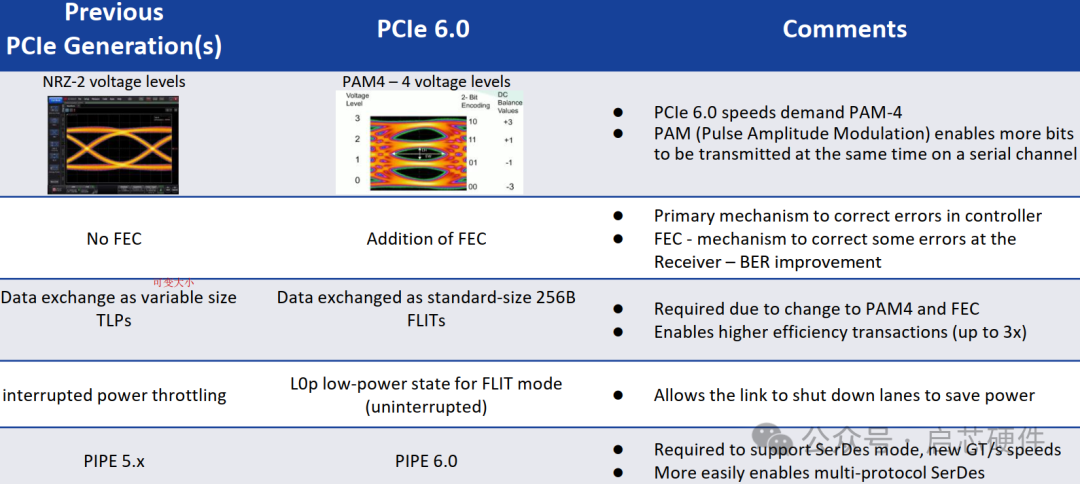
PAM-4介绍
PAM-4(pulse amplitude modulation,4-level)编码并不是一个新技术,在超高速以太网编码上已经广泛应用。但这不是它第一次进入板级总线PCIe6编码(还有GDDR6x)。我们知道,PCle传输信号是一对差分信号,解码的时候只有0和1两种,叫做NRZ(non-return-to-zero),而PAM-4根据则在0和1之间划分处更多的空间,一个周期可传输信号从1个bit变成传输2个bit:

System Level Considerations and Challenges
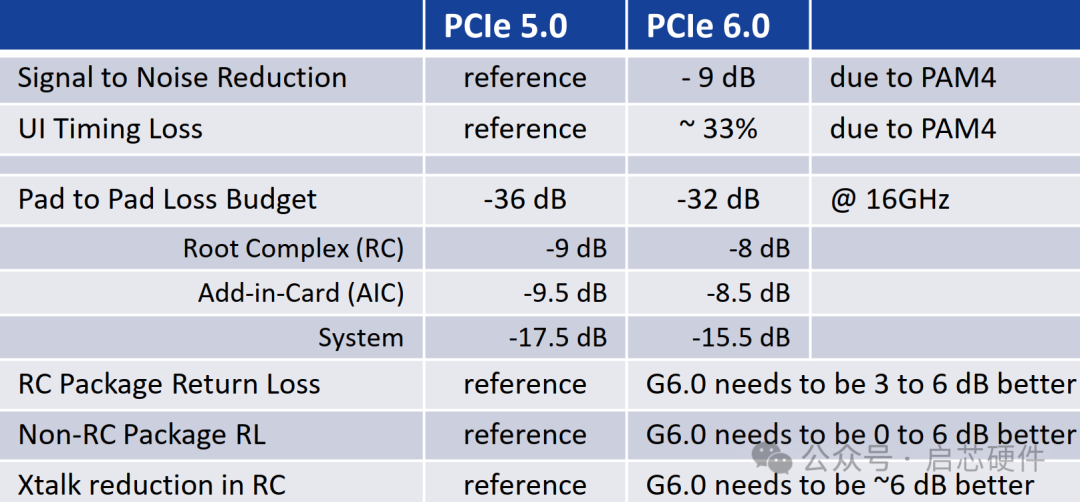
Overall system improvements are required:
• PCB and Package
• Higher layer count, improved dielectric material, tighter manufacturing tolerances
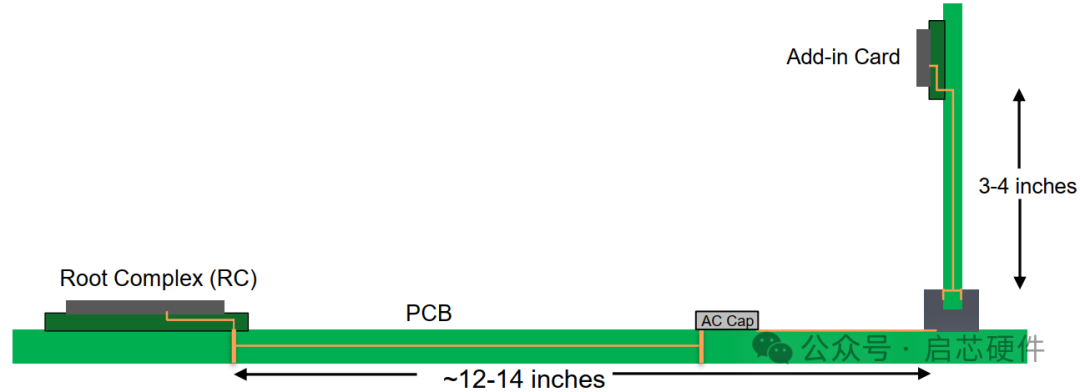
PCIe Retimer Use Models
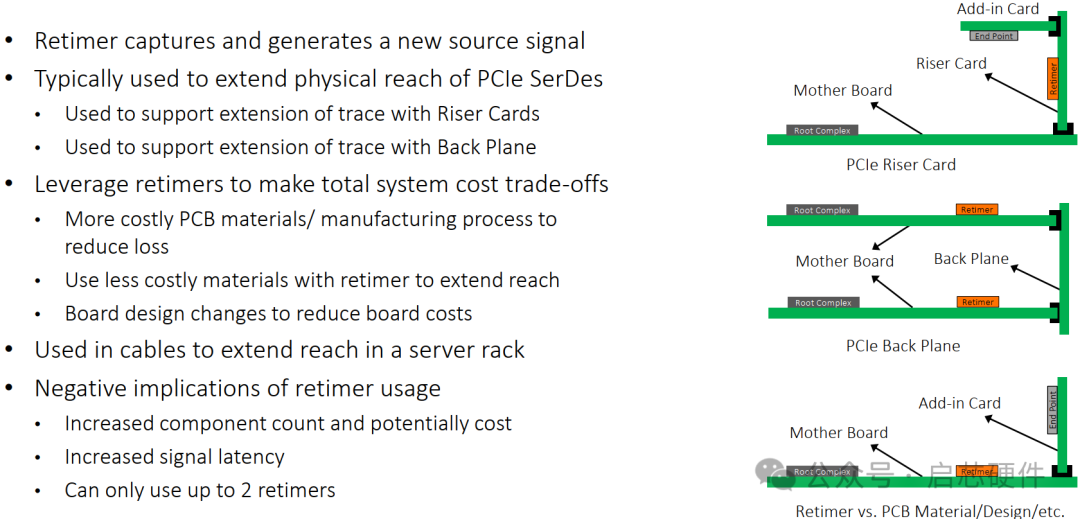
PCIe Switch Use Models

• Connects a large number of peripheral devices to a processor system
• PCIe Switch used when connecting to JBOF (Just a Bunch of Flash) or JBOG (Just a Bunch of GPUs)
• Industry direction to fabric attached and disaggregation provides access to multiple sources of memory, storage or off load compute via CXL 3.0
PCIe 6.0 Controller IP Solution
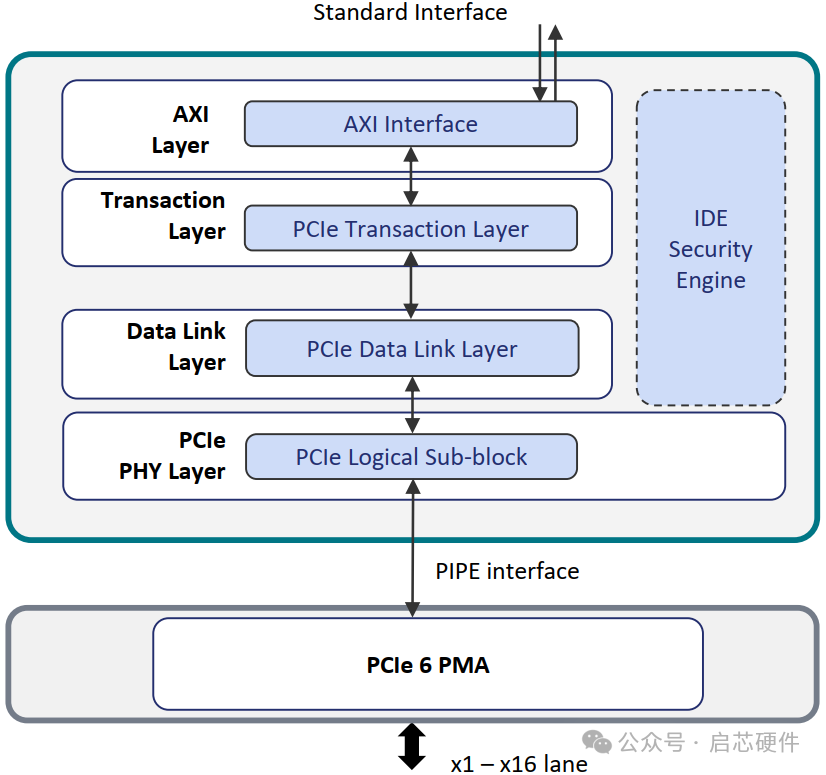
Controller Features
• Native/AMBA interface with scalable data path width
• FLIT/non-FLIT modes
• Light weight FEC to improve BER
• Optional IDE Security Engine
• PIPE 6.1 (SerDes Mode)
• Same RTL for ASIC and FPGA implementation
• Fully parameterized through GUI configurator
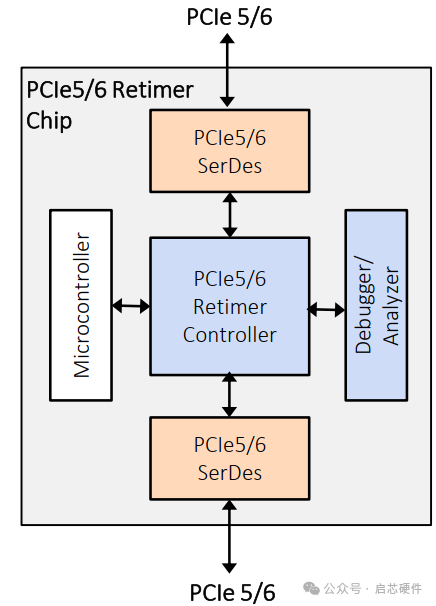
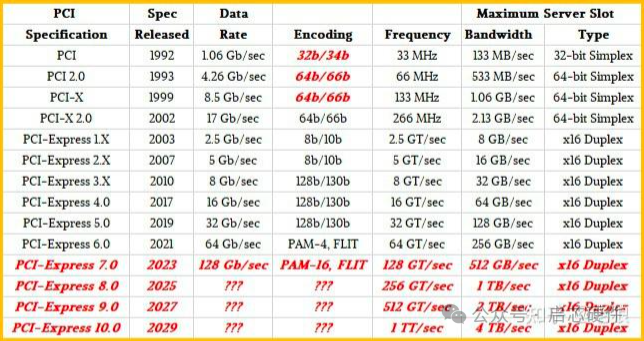



 浙公网安备 33010602011771号
浙公网安备 33010602011771号